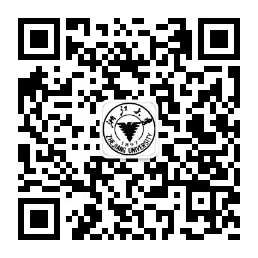浙江大学语言学家Kevin Tang(语言与翻译系、外国语言学及应用语言学研究所)所在的国际跨学科研究团队发现了阅读障碍基因变体与辅音使用之间的相关性,表明遗传基因是造成不同群体之间语言差异性的因素之一,这项研究发表在四月份的《美国科学院院报》(PNAS)上。(doi:10.1073/pnas.1710472115).
该研究团队涉及多个学科,由分别来自耶鲁大学、浙江大学和布鲁克大学的遗传学家、统计学家、语言学家、儿科专家和发展心理学家所组成,他们考察了来自五大洲的43个不同群体的基因库和语音库,以揭示细微的语言差异在多大程度上是由基因所决定的。
该团队把DCDC2基因作为考察对象,该基因与大脑处理音位的能力密切相关。他们主要关注DCDC2基因中通常与阅读障碍相关联的片段READ1。音位是语言中构词的基本语音单位,比如英语中 “pat”和“bat”里的‘p’ 和‘b’以及汉语普通话中“怕”和“爸”里的‘p’和‘b’(非语音转写)。该团队聚焦语言的两大特征:元音和辅音。不同的语言所使用的元音和辅音的数量各不相同。有些语言,比如爱沙尼亚语和芬兰语,有相对较多的元音,而在其它一些语言中,例如西班牙语和克丘亚语,元音的数量则比较少。一些语言中的辅音数量较少——比如,新几内亚东部的大型岛屿布干维尔岛上使用的一种东巴布亚语Nasioi语中仅有8个辅音——而另外一些语言中则拥有数量较多的辅音——例如,坦桑尼亚中北部多多马区的孔多阿地区使用的Sandawe语是一种孤立语言,有44个辅音。
该团队考究了非人类灵长动物、尼安德特人、丹尼索瓦人和现代人的READ1序列,发现该调控序列在55万年前至4百万年前发生了变化。他们还对比了43个群体的READ1变体与这些群体所使用的语言中辅音和元音的数量。结果发现,辅音的数量——而非元音的数量——与使用该语言的群体中RU1-1(READ1的变体之一)的频率具有相关性。
全球目前在用的语言有7000多种,研究人员称,这些语言的形成多被认为是受到了一系列因素的影响,包括移民、占领以及人口的地理隔离等。而这项研究则取得了一项令人意外的发现:遗传因素在语言的演化中可能也发挥了一定的作用。
“语言的演化传统上很少被归因于遗传因素。”浙江大学的语言学助理教授Kevin Tang这样说道。
大脑对元音和辅音进行处理和编码的策略各不相同,受到阅读障碍基因的调节。研究人员称,这些基因的遗传变异,加之其它文化和语言方面的作用,共同导致了不同群体在辅音使用上的差异。
“虽然这项研究强调生物学上的差异在语言的演化机制中也有一席之地,但需要指出的是,任何语言都能够被所有人习得,即使语言结构看似不同——例如,口语和手语——本质上也具有相同的认知过程”Kevin Tang说道。
作者贡献:M.M.C.D.和J.R.G.是研究的设计者;M.M.C.D.、K.T.、C.M.M.、C.G.、N.R.P.和B.M.B.是研究的实施者;C.M.M.贡献了新的试剂/分析工具;M.M.C.D.、C.M.M.、J.G.M.、A.K.A.、D.T.T.和J.C.F.对数据进行分析;M.M.C.D.、K.T.和J.R.G.撰写文章;J.G.M.和D.T.T.提供了背景材料。
有关这项研究的其它介绍,请参看:
· Quartz: https://qz.com/1264305/can-genes-change-the-way-languages-evolve/
· Neuroscience news: http://neurosciencenews.com/gene-variation-language-8831
· and others: https://pnas.altmetric.com/details/37682661/news
What can genetic variation tell us about the evolution of languages
Zhejiang University linguist Kevin Tang (Dept. of Linguistics & Institute of Linguistics and Applied Linguistics in Foreign Languages) is part of an international, multi-disciplinary research team that identified variants of a dyslexia gene that correlate with consonant use, establishing a role for genetics in differences in languages between populations, according to the study, which was published in the April issue of Proceedings of the National Academy of Sciences (PNAS). (doi:10.1073/pnas.1710472115).
The multi-disciplinary research team, consisting of geneticists, a statistician, linguists, a paediatrician and a developmental psychologist from Yale University, Zhejiang University and Brock University, examined the genetics and sound inventories of 43 different populations on five continents to see the extent to which genes play a role in subtle language differences.
The team examined DCDC2, a gene that is strongly associated with the brain's capacity to process phonemes. In particular, they focussed on READ1, a component of the DCDC2 gene, which has been consistently linked to dyslexia. A phoneme is a basic unit of sound that makes up words in a language, such as 'p' and 'b' in “pat” and “bat” in English and in “怕”and “爸” in Mandarin Chinese. The team looked at two major characteristics of languages: vowels and consonants. Different languages utilize different numbers of vowels and consonants. Some languages, like Estonian and Finnish, have relatively more vowels, while others, like Spanish and Quechua, have fewer vowels. Some languages have a small number of consonants – e.g. Nasioi, an East Papuan language spoken on Bougainville, a large island to the east of New Guinea, has 8 consonants – while others have a large number of consonants – e.g. Sandawe, a language isolate, spoken in North Central Tanzania in the Dodoma Region, Kondoa District, has 44 consonants.
The team traced READ1 sequences in nonhuman primates, Neanderthals, Denisovans, and modern humans and found that the regulatory sequence changed between 550,000 and four million years ago. They also compared READ1 variants among 43 populations with the numbers of consonants and of vowels present in the languages spoken by those populations. It was found that the number of consonants – but not of vowels – correlated with the frequency of RU1-1, a READ1 variant in the language’s population.
There are more than 7,000 languages spoken globally. They are thought to have been shaped by a range of factors such as migration, conquests and geographic isolation of populations, the researchers say. The surprising finding in this study is that genetic factors might also play a role in language change.
“Traditionally language change is not often attributed to genetics, full stop,” says Kevin Tang, an assistant professor of Linguistics at Zhejiang University.
The brain uses distinct strategies to process and encode vowels and consonants, which are modified by dyslexia genes. Genetic variations of these genes, along with other cultural and linguistic processes, may account for differences in consonant use between populations, the researchers conclude.
“While this study highlighted how biological differences could contribute to the mechanisms of language change, it is important to note that any language can be learned by any person, and even languages that have seemingly different linguistic structures – for instance, spoken versus signed languages – are still rooted in essentially the same cognitive processes,” says Kevin Tang.
Author contributions: M.M.C.D. and J.R.G. designed research; M.M.C.D., K.T., C.M.M., C.G., N.R.P., and B.M.B. performed research; C.M.M. contributed new reagents/analytic tools; M.M.C.D., C.M.M., J.G.M., A.K.A., D.T.T., and J.C.F. analyzed data; M.M.C.D., K.T., and J.R.G. wrote the paper; and J.G.M. and D.T.T. provided background material.
For other reports on this study, see:
· Quartz: https://qz.com/1264305/can-genes-change-the-way-languages-evolve/
· Neuroscience news: http://neurosciencenews.com/gene-variation-language-8831
· and others: https://pnas.altmetric.com/details/37682661/news



